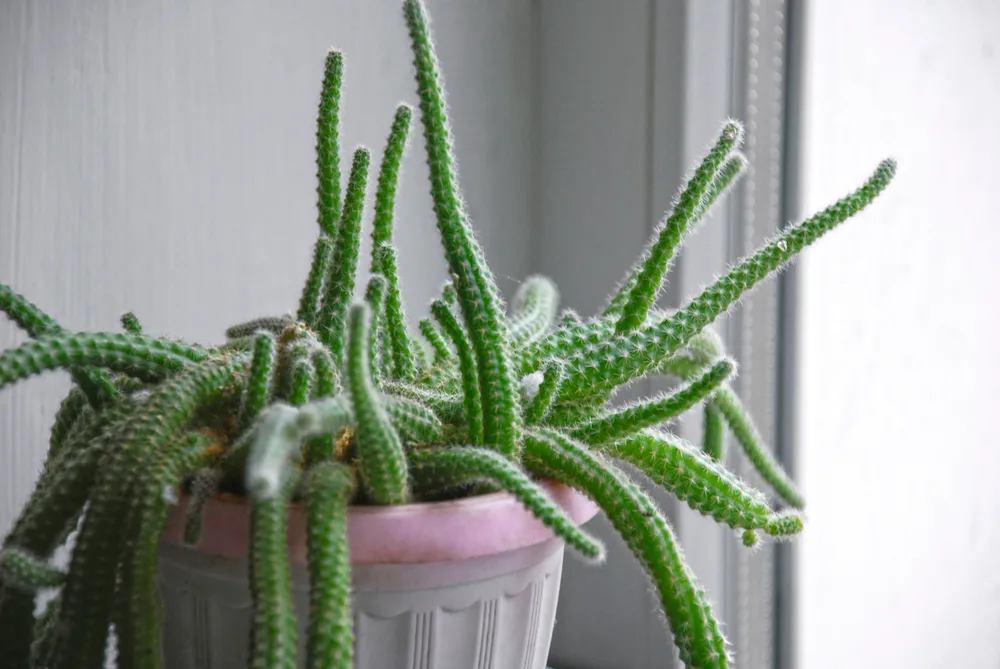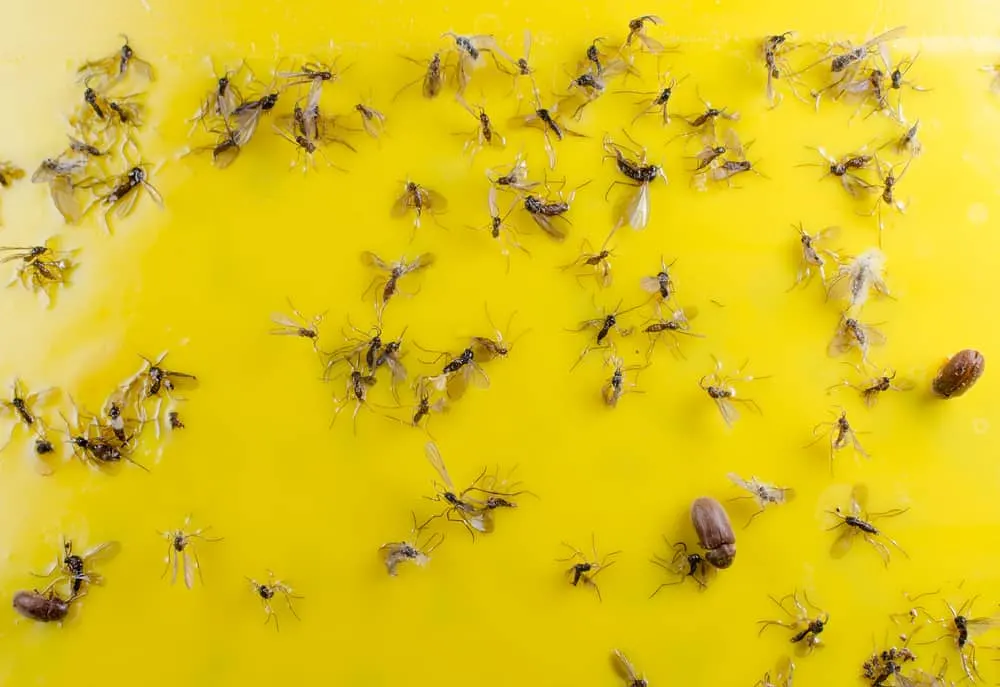
Fungus gnats are small, dark, soil dwelling flies that feed on organic matter in potting mix and other growing media.
Adult fungus gnats reach a size of only 1/16 of an inch – small enough to easily slip through window screens.
They can also make their way into your home by hiding in cheap, unpasteurized, and poor quality commercial potting soils.
Also beware of purchasing houseplants from shops where they are kept on display outdoors, since soil exposed to the elements increases your chances of dealing with these tiny flies considerably.
A fungus gnat infestation may not be noticeable at first but will become quite apparent as they grow their numbers.
In indoor settings, they typically make their presence known when you water your plants and a billow of these pests take to the skies.
Spreading from plant to plant, fungus gnats can certainly be a nuisance.
Though they can harm the roots and stunt the growth of young plants and seedlings, for the most part, fungus gnats shouldn’t damage your more established and mature houseplants.
Although generally fungus gnats are more annoying than they are harmful, allowing their populations to go entirely unchecked will lead to a deluge of them among your plant shelves.
And the more of them there are, the greater the odds of spreading botrytis and other diseases fungus gnats can carry to your healthy plants.
The Lifecycle of a Fungus Gnat
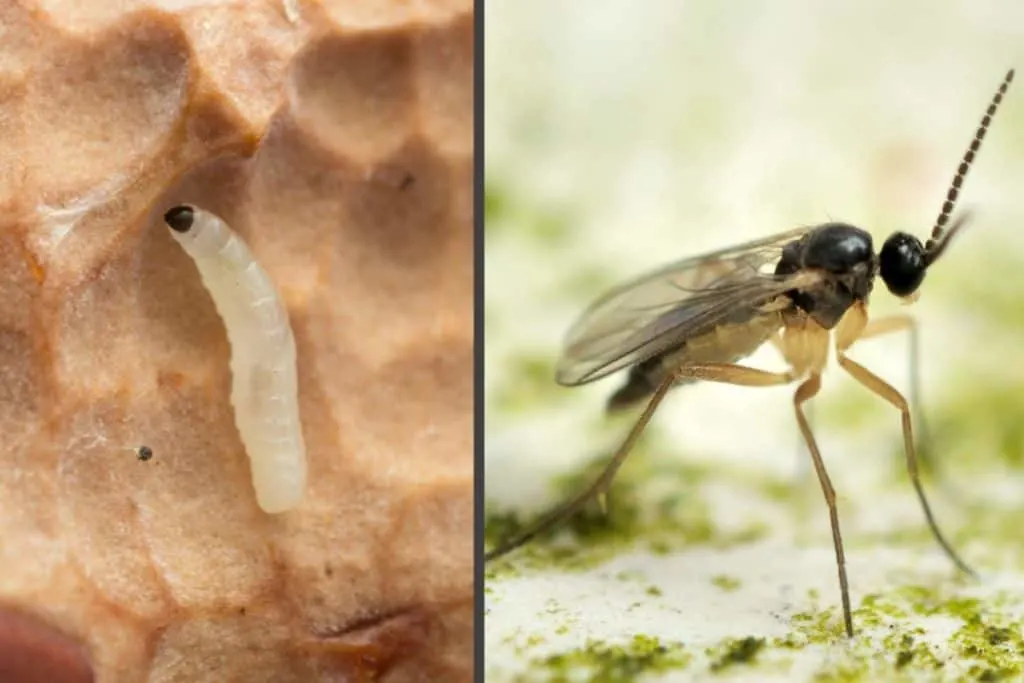
The life of a fungus gnat consists of four stages that typically take place over 20 to 28 days.
Most similar in appearance to a tiny mosquito, adult fungus gnats are winged, with long legs and antennae.
Congregating close to the surface of the growing medium, females will deposit between 100 to 200 eggs into the nooks and crannies of the soil.
Eggs hatch into translucent larvae which feed on organic matter and plant roots, especially root hairs.
They can quickly infest the entire container, all the way down to the base of the pot, and will even feed on fallen leaves lying on top of the soil.
Larvae prefer moist soil and require a source of fungi to reach maturity.
After about 10 days, the larvae develop into pupae. Four days later, adult fungus gnats emerge from the soil and repeat the cycle anew.
How to Control Fungus Gnats Indoors
Controlling fungus gnats often requires taking a multi-pronged approach, since what works for adults won’t necessarily help deal with eggs and larvae.
1. Water Houseplants Sparingly
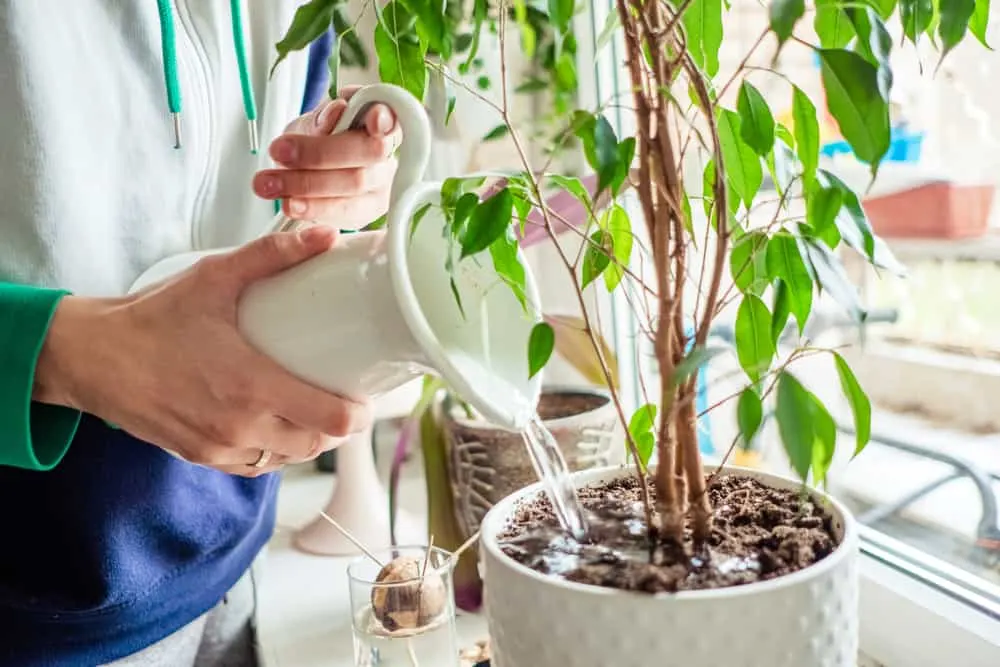
The easiest way to reduce fungus gnat populations indoors is to simply stop watering your plants as much.
Adult fungus gnats are most attracted to soil that is moderately damp, with a moisture content of 52%.
By allowing the soil to dry out, you will create a less hospitable place for adults to lay eggs.
Meanwhile, a moist growing medium is also critical to the survival of the larvae as well so watering less is also very effective against each stage of the fungus gnat lifecycle.
The main caveat with this strategy is how to balance reduced moisture in the soil with keeping your plants alive and happy. Allowing your soil to dry out too much (or for too long) can cause your lovely greens to wilt and die.
When trying to gauge whether to water or not, stick your finger into the soil to a depth of 2 to 3 inches. If the soil is dry, water; if it’s still wet, recheck moisture levels in another day or two.
Pick up your planter pot. A heavier container means there’s still dampness in the soil while a lighter pot will signify dryness.
Some plants are more tolerant to periods of dry soil. These kinds of plants will droop when they are dry and will perk up again a couple of hours after receiving water.
For drought tolerant plants, you may wish to wait until they show signs of wilt before giving them a drink.
In addition to limiting water, you’ll also want to ensure your potting soil drains well.
Every time you water your plants, allow it to clear through the growing medium before emptying plant saucers of any standing water.
2. Insect Traps
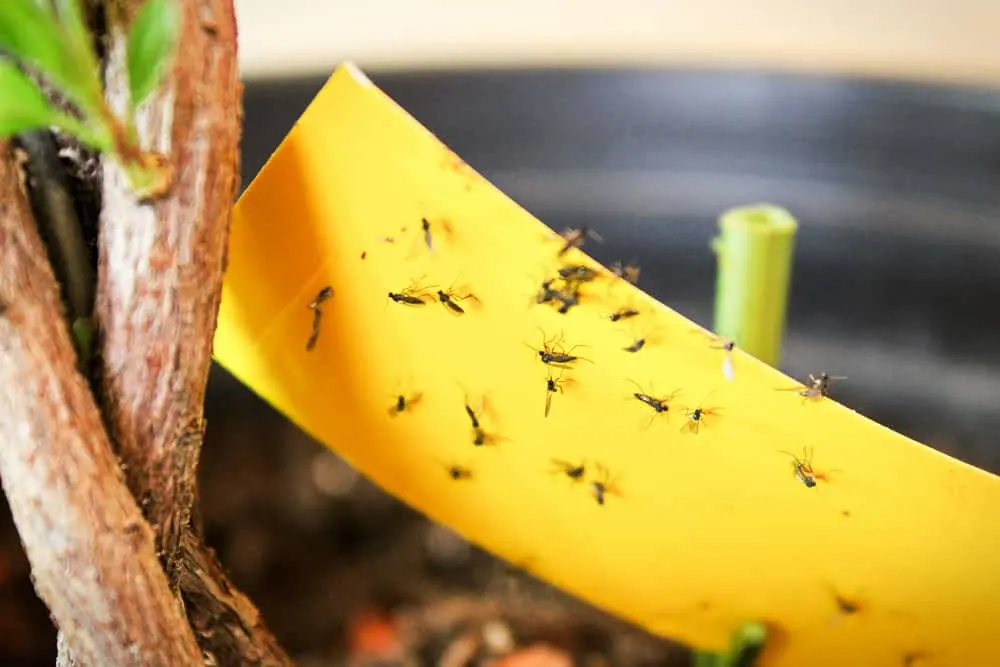
While setting up some insect traps won’t rid you entirely of these meddlesome pests, it can certainly help cull their numbers.
For adult fungus gnats, yellow sticky cards (like these) placed close to the surface of the soil will snag numerous flies as they hover and flit around.
To catch larvae, slice up a raw potato into disks or wedges and nestle them into the soil. Larvae will infest the potato, keeping them from feeding on plant roots.
After a few days, remove the potatoes from the soil and replace with fresh ones.
3. Diatomaceous Earth
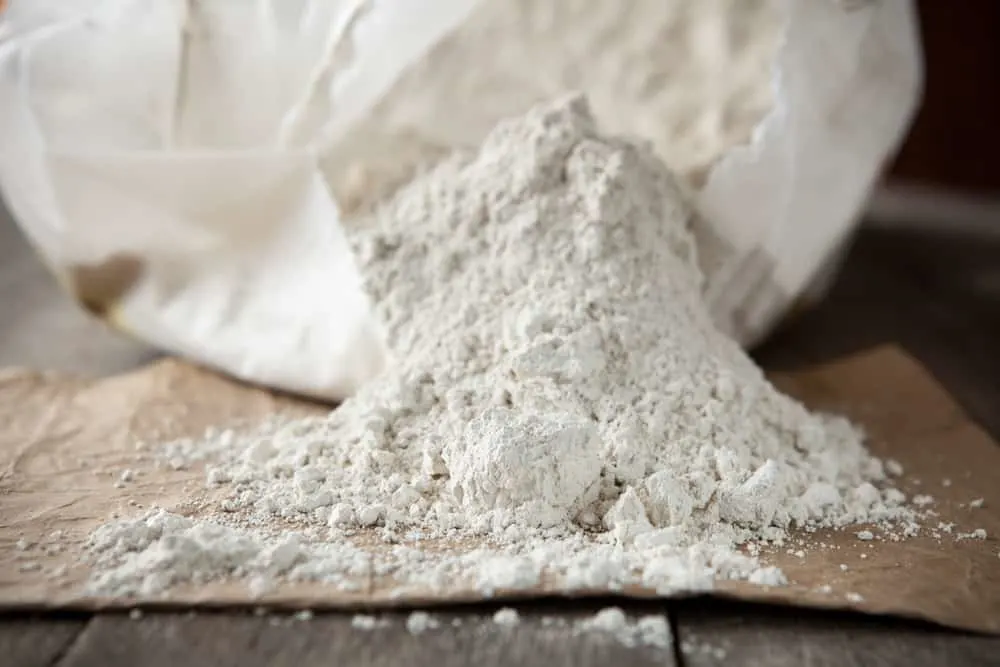
Made up of the fossilized remains of prehistoric algae, diatomaceous earth is an all natural solution for many indoor insect woes.
Ground up into a soft, fine powder, DE is composed primarily of the mineral silica that, on a microscopic level, consists of jagged glass-like cylinders.
It is an excellent pest control for soft-bodied insects because it punctures the body and dries them up from the inside out.
To tackle both adults and larvae, carefully sprinkle diatomaceous earth over the surface of the soil, to a depth of a ¼ inch. Leave it for one week before gently mixing it in to the top layer of the soil.
To prevent DE from washing away when you water your plants, simply water from below.
When shopping for diatomaceous earth, look for food grade, freshwater varieties – like this 2-pound bag by Harris.
Although DE is non-toxic and safe to use around children and pets, it is such a fine powder that you should take care not to breathe it in and to protect your eyes and hands when working with it.
4. Beneficial Nematodes
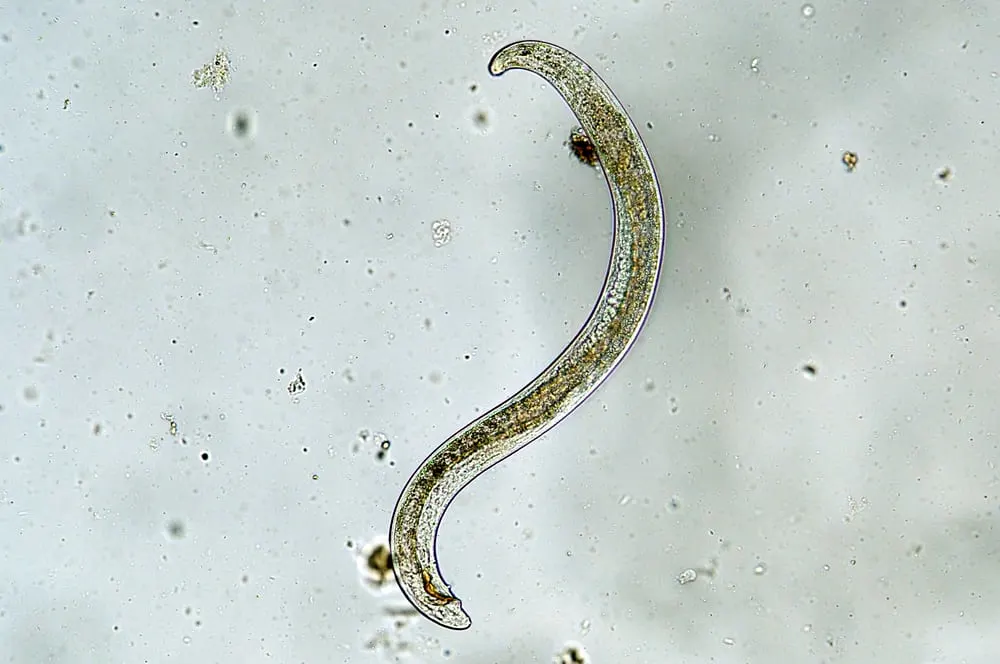
Invisible to the naked eye, beneficial nematodes are teeny tiny roundworms that feed on various types of soil borne pests.
Operating as both a predator and a parasite, Steinernema feltiae is a species of nematode that is very effective against fungus gnat larvae.
It works by seeking out a host larva and penetrating its body, where it then feeds and reproduces more nematodes. It typically will kill the host within 24 to 48 hours.
Purchased live and in the millions, you can usually find S. feltiae at specialty garden stores. It’s also shipped and sold by Amazon here.
The nematodes come embedded in a sponge that should be soaked in lukewarm water as soon as you receive them. Follow the package directions carefully.
Squeeze the sponge several times to ensure all nematodes are released into the water. For best results, water your houseplants before applying the nematodes and again afterwards.
Avoid applying nematodes in bright sunlight and when temperatures are above 90°F.
Keep the soil consistently moist (but not too wet) since dry soil will kill these good guy wrigglers.
Note: Do not apply nematodes in conjunction with diatomaceous earth!
5. Sterilize Your Potting Soil
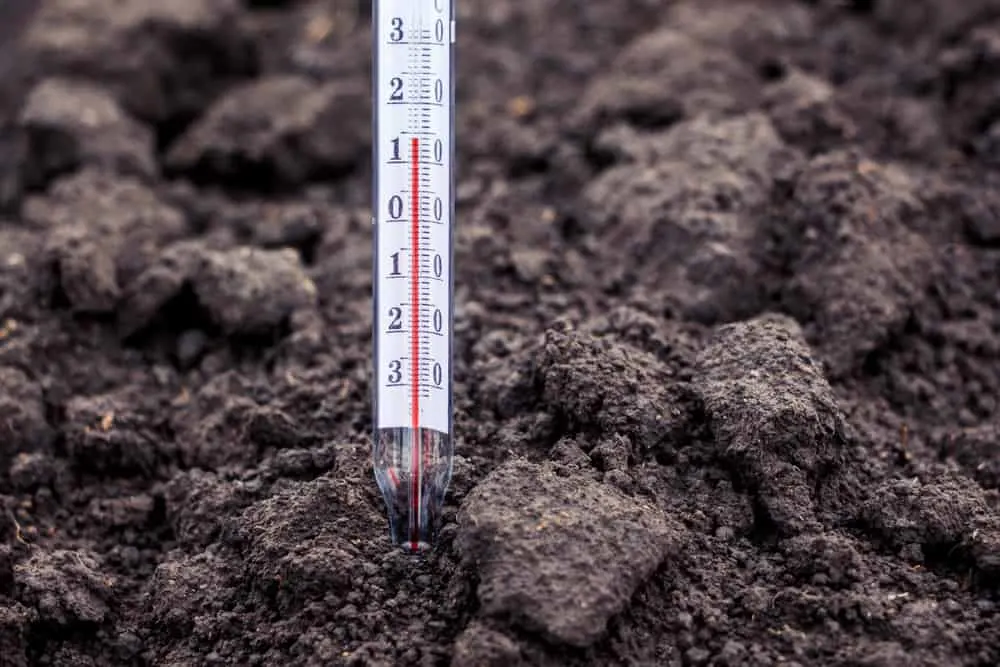
A sure fire way to kill off fungus gnats (and other soil dwelling creepy crawlies) for good is to sterilize your soil with heat.
This is most definitely the nuclear option since it’s time consuming and somewhat labor intensive. But it absolutely works.
There are two ways to accomplish this, the faster way (with a microwave) and the slower way (using solar heat).
Prep Your Plants:
- Gently remove the plant from its container by loosening the soil with a fork or spoon to avoid damaging the roots.
- Once the plant is removed and while standing over a sink, carefully massage the root ball and clear off as much soil as possible from the roots.
- Rinse the plant and its roots well with tepid water.
- Submerge the plant in a bucket of soapy water to kill any insects hiding in the foliage and root system. Let it soak while you heat the soil in the next steps.
- Thoroughly wash and disinfect your plant containers with diluted white vinegar once they have been emptied of soil.
The Microwave Method:
- Dump the contaminated soil (up to 2 pounds) into a microwave safe dish or polypropylene bag.
- Moisten the soil with water and break up any clumps.
- Leaving the soil uncovered, microwave on high for 90 seconds.
- Check the temperature with a meat thermometer. The ideal temperature range is between 160°F to 180°F. Be careful not to heat the soil above 200°F as this will make your soil toxic to plant life.
- If more heat is needed, remove the thermometer and microwave in 30 second intervals.
- Once the soil reaches the right temperature, remove it from the microwave. Cover the bowl with cling wrap or tie off the bag for 20 minutes.
- Remove the cover and allow the soil to slowly cool to room temperature.
- When soil is cool to the touch, remove the plant from the soapy water and repot.
Repeat these steps for each plant affected by fungus gnats.
The Solarization Method:
- Moisten the soil and break up any clumps.
- Place soil in a black or clear plastic garbage bag and tie it off tightly.
- Flatten the soil into a rectangular shape, ensuring its depth is no more than 8 inches.
- Move the soil outdoors to a sunny spot, placing it on a slightly elevated surface such as a pallet.
- Leave it to bake in the sun for 4 to 6 weeks.
- In the meantime, repot your houseplants with fresh soil. Make sure you use only high quality soil. When it doubt, pasteurize soil first using the microwave method.
As an added precaution, you may wish to cover your freshly sterilized and repotted plants with a clear plastic bag to avoid cross-contamination while you work on the next plant.
Covering up the entire plant – including the drainage hole – will also prevent any adult fungus gnats still present in the home from reproducing in your clean soil.
It only takes one egg or fungus gnat to undo all your hard work!
Leave the bags on the plants for a few weeks, or until you are sure your home is fungus gnat free.
What Doesn’t Work on Fungus Gnats…
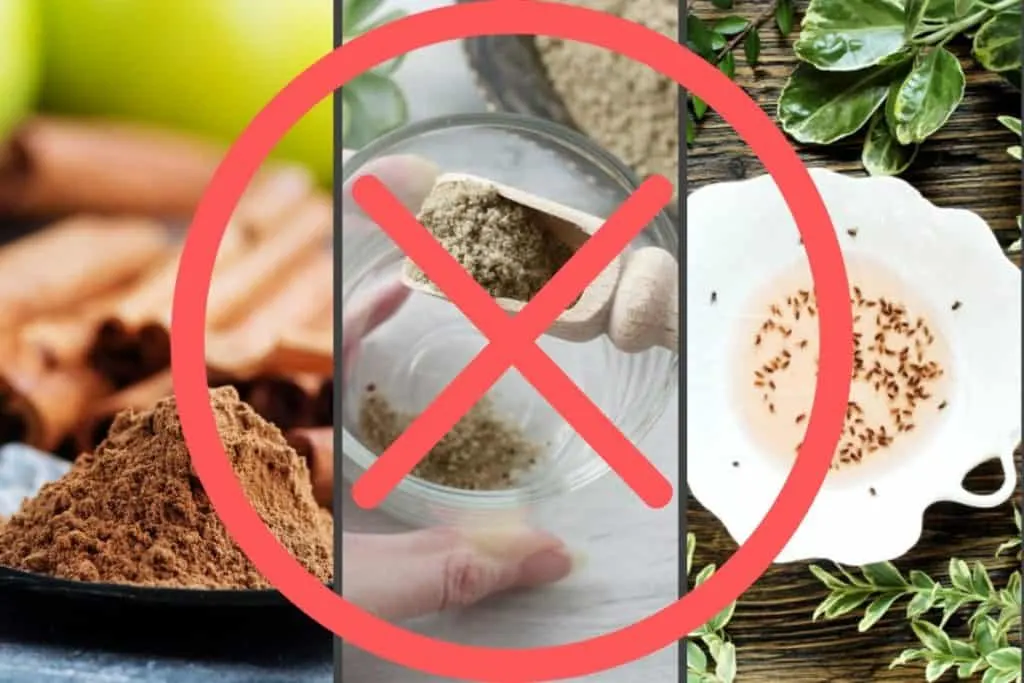
Cinnamon
Because cinnamon is naturally antifungal, it is sometimes recommended to sprinkle a layer of this spice on the surface of the soil.
Unfortunately, reducing fungi within the growing medium will only drive the larvae to feed on the plant roots instead.
Sand
While in theory topdressing your soil with a layer of sand should prevent adult fungus gnats from laying eggs on the surface of the soil, in practice this tip has proven pretty ineffective.
Sand will reduce evaporative water loss and create soggy soil underneath the sand – a condition that your plants are sure to dislike!
Fungus gnats also appear to enjoy a challenge, and will enter through the drainage holes to lay their eggs.
Vinegar
Although the ol’ vinegar trap might work like a charm for catching fruit flies, you may only see a few fungus gnats get lured to their demise with this trick.
Other Tips for Dealing with Fungus Gnats
When bringing outdoor plants inside for overwintering, always repot with clean potting soil or sterilize the growing medium.
Don’t mix outdoor compost into indoor potting soils.
Prevent fungus gnats from spreading throughout your home by keeping affected plants in the same spot. Fungus gnats aren’t good fliers so don’t give them a helping hand by moving plants from room to room.
Only purchase high quality potting soil. We like this organic potting mix by Burpee.
Read Next:

Get the famous Rural Sprout newsletter delivered to your inbox.
Including Sunday ramblings from our editor, Tracey, as well as “What’s Up Wednesday” our roundup of what’s in season and new article updates and alerts.



